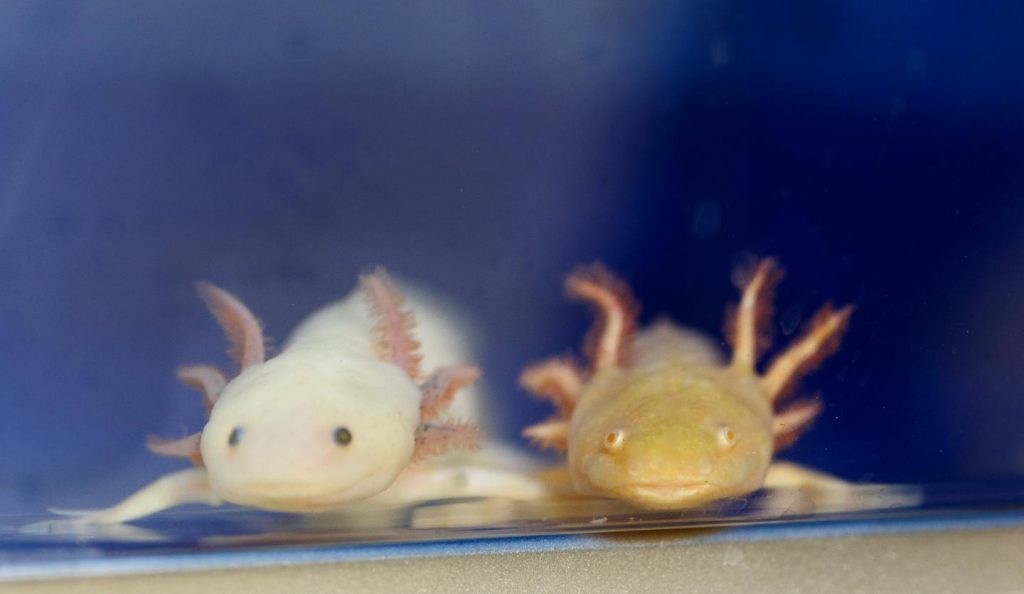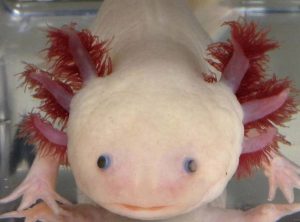Researchers believe they are one step closer to solving the mystery of why some vertebrates can regenerate their spinal cords while others, including humans, create scar tissue after spinal cord injury, leading to lifelong damage.
Scientists at the Marine Biological Laboratory (MBL) have identified gene “partners” in the axolotl salamander that, when activated, allow the neural tube and associated nerve fibers to functionally regenerate after severe spinal cord damage. Although these genes are also present in humans, they are activated in a different manner.
The team’s study (“AP-1cFos/JunB/miR-200a regulate the pro-regenerative glial cell response during axolotl spinal cord regeneration”) appears in Nature Communications Biology.
“Salamanders have the remarkable ability to functionally regenerate after spinal cord transection. In response to injury, GFAP+ glial cells in the axolotl spinal cord proliferate and migrate to replace the missing neural tube and create a permissive environment for axon regeneration. Molecular pathways that regulate the pro-regenerative axolotl glial cell response are poorly understood,” write the investigators.
“Here we show axolotl glial cells up-regulate AP-1cFos/JunB after injury, which promotes a pro-regenerative glial cell response. Injury-induced upregulation of miR-200a in glial cells suppresses c-Jun expression in these cells. Inhibition of miR-200a during regeneration causes defects in axonal regrowth and transcriptomic analysis revealed that miR-200a inhibition leads to differential regulation of genes involved with reactive gliosis, the glial scar, extracellular matrix remodeling, and axon guidance. This work identifies a unique role for miR-200a in inhibiting reactive gliosis in axolotl glial cells during spinal cord regeneration.”

Echeverri’s prior research had shown that, in both axolotls and humans, the c-Fos gene is up-regulated in the glial cells of the nervous system after spinal cord injury. She also knew that c-Fos cannot act alone.
“It’s what we call an obligate heterodimer, so it has to have a partner in life,” said Echeverri. “c-Fos has a different partner in axolotl than it has in humans and this seems to drive a completely different response to injury.”

By modifying gene expression by the axolotls’ microRNA, they were able to force the human pairing of c-Fos with c-Jun. The salamanders with the human pairings were unable to regain a functioning spinal cord after injury, instead forming the scar tissue that occurs in human injury repair. Follow-up studies will investigate if the reverse is true in human cells.
“The genes involved in regeneration in axolotl are highly conserved between humans and axolotls, and it doesn’t appear so far that axolotls have regeneration-specific genes,” said Echeverri. “It’s all about who you partner with directly after injury, and how that drives you toward either regeneration or forming scar tissue. It’s kind of like in life, who you partner with can have a really positive or negative effect.”
Understanding the axolotl spinal cord regeneration and its differences from—and, more interestingly, similarities to—the human process could help researchers and eventually doctors improve treatment for severe human spinal cord injuries.
“That has a huge translation potential not just for spinal cord injury in humans, but also for a lot of neurodegenerative diseases,” Echeverri said.



